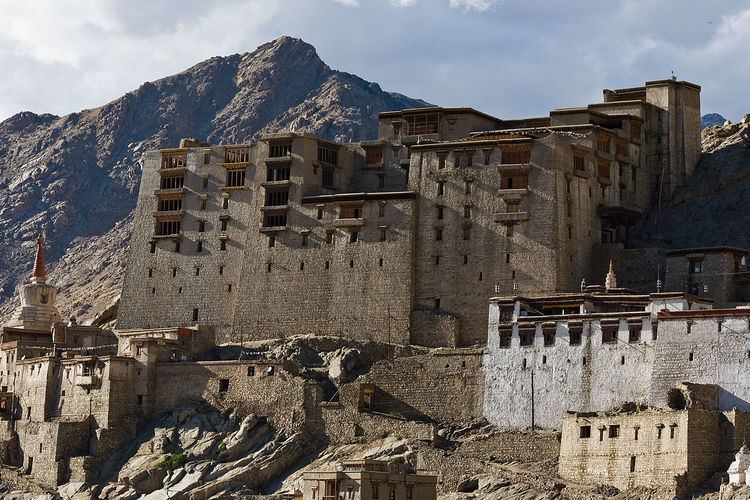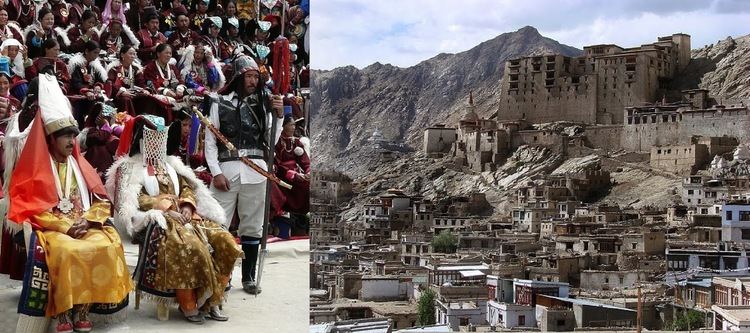Name Sengge Namgyal Role King | Died 1642 | |
 | ||
Sengge Namgyal (Sen-ge-rnam-rgyal, c. 1570–1642) was a 17th-century Namgyal dynasty King of Ladakh, India from 1616 to his death in 1642. A Buddhist, he was noted for his immense work in building monasteries, palaces and shrines in Ladakh and is known as the "Lion King".
Contents

Biography

Sengge was born to Jamyang Namgyal and a Muslim mother. He was a devout Buddhist. In 1610, during the reign of his father, Jamyang Namgyal, Sengge and his father built the Basgo Monastery and erected a 24-foot statue of Maitreya within it and a 32-foot Buddha statue which is reportedly the second largest Buddhist statue in Ladakh after the statue in Shey Palace.
In his youth, he showed great martial skill and a flair for command. Talents which got him the command of the army. In 1614, he captured the mining town of Rudok followed by Spurangs, another important gold mining town, in 1615. The plunder and the output from these towns financed the building projects he would later commission as the King. In 1616, on the death of his father, Jamyang Namgyal, he ascended to the throne. He completed the conquests of Kingdom of Ngaris after a brief siege of Guge castle in 1619. Trade flourished under Namgyal along the Silk Road and he generated much wealth through trade with Kashmir to the west, and with Tibet to the east. However, he occasionally fell into dispute with the Muslim rulers of Kashmir.
During his reign, Sengge was responsible for building or renovating some of the most notable buildings in the region such as the Leh Palace, which he built after moving from Shey Palace/Monastery, and he built the Hemis monastery in 1630. With the assistance of the eminent Tibetan priest, Stag-tsang-ras-pa, he built the Hanle Monastery and was the first to be associated with the Drugpa school that Stag-tsang-ras-pa belonged to and which, under the patronage of the Namgyal family, became very important in Ladakh, seriously rivaling the reformed ("Yellow Hat") Gelug sect.
Sengge was also responsible for renovating the Golden Temple of Tabo Monastery in the Spiti Valley, Himachal Pradesh which was said to have been once covered with gold. The walls and ceilings are covered with murals today.
Death and legacy
Sengge remained devoted to the Ralung lineage of the Drukpa Kagyu school of Tibetan Buddhism after meeting the Tibetan priest for the remainder of his life. He died in 1642 at Hanle on his return from an expedition against the Mongols who had occupied the Tibetan province of Tsang and were threatening Ladakh. Chemrey Monastery, built in the 17th century was dedicated to Sengge Namgyal and the Drugpa sect.
